News
Interview: Writer/Director Ryan Spindell on Anthologies and ‘The Mortuary Collection’

Ryan Spindell’s first feature, The Mortuary Collection, is an ambitious anthology that works wonders on a modest budget. Starring the much-loved Clancy Brown as the mortician, the film tells a series of stylized tales that are beautifully shot, well acted, and wonderfully written. If you’ve ever enjoyed the anthology format, I can tell you, it’s a must-see. Hell, even if you don’t, it’s a truly fun film that has a whole lot to love.
I recently had the opportunity to sit down with writer/director Ryan Spindell to discuss horror anthologies, lessons learned, aesthetic inspirations, and Spindell’s go-to Halloween horror movie favorites.
Kelly McNeely: So The Mortuary Collection, let’s have a chat about that. The Babysitter Murders was the short film that was expanded into the full film of The Mortuary Collection, how did that get developed? And what was the process for making that into a longer form?
Ryan Spindell: I started off with the feature, actually. At the time, I was kind of new to LA and I was working doing writing in the Hollywood system. And I was getting really disenfranchised, specifically, there’s this one project I was working on, and they weren’t giving me any notes other than “make it more teen, it needs to be more teen”. And it was a movie set in high school, but it was a very, like, hard R movie. So it was just really frustrating to me. And I remember sitting there thinking, I want to revisit one of my favorite formats that had sort of been long dormant, which was the anthology film.
Keep in mind, this was in 2012, when there were no anthology films at that time. Since I started conceiving this movie to the actual finished product, anthologies have had a boom, and now I feel like I’m on the end of the wave. But the idea at the time was, I feel like this is such a cool format that I loved when I was younger, and that I still sort of think is really interesting. Maybe I could do something like this, and kind of stand out from the group, and I think also at the time horror was sort of in the doldrums a little bit. It was very much like a post Hostel/Saw kind of world. And my meetings were all within the genre box, everybody wanted very hard core, very straight slash-em-up-in-the-woods horror, which isn’t really my thing.
So I basically sat down and I had all of these really cool short ideas just kind of rattling around in my brain. And I started making a list of all these shorts that I wanted to make, and I think it was probably about 12 short ideas. And I picked my four favorites. And then I started trying to figure out a way to tie them all together. And so that’s how the project was initially born. And I do think writing The Babysitter Murders — if I’m being specific — I do I remember I wrote that script in completion, and I liked it enough that it sort of did inspire me to move forward with this whole anthology idea. But I didn’t write the whole movie as one, and I put a lot of work into the wraparound and trying to make sure it felt like one cohesive piece and not sort of, you know, just sort of fade to black and here’s another story.
And they then sent the script out, and people really loved the script. But everybody was like, there’s no fucking way we’re going to make this movie. Nobody makes anthology movies, I don’t know why you wrote it in the first place. I was like, I don’t know either, I knew it was gonna be ridiculous. But I loved the script. And I sat down with one of my collaborators, Ben Hethcote, and we were like, well, we know how to make shorts. We’ve made shorts in the past, and we now have a feature film made of shorts. Why don’t we take one of them and finance it ourselves and make it, and then use that as a proof of concept to show people what the movie could be?
And so we picked The Babysitter Murders, because it was the most contained, and it had the smallest cast. And we did a Kickstarter campaign and we made it back in 2015. So I’ve heard some people talking about, oh, they remade the short for the feature, or The Babysitter Murders is the movie inside the movie — in the feature — but the reality is that it was always designed to be the kind of climax of the film. It just happened to be the easiest one for us to pull off, and the one that had the most wow factor to kind of make people want to see more.
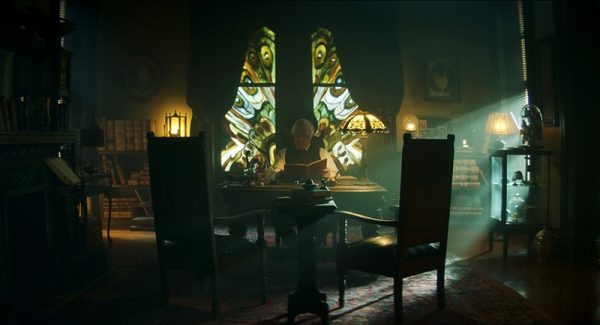
Kelly McNeely: One of the things I love about The Mortuary Collection is that there are different subgenres represented within the film, in each segment. Do you have a favorite subgenre, or one that you’d really like to work with as a full feature?
Ryan Spindell: I mean, I love monsters. I’m a monster kid at heart. And to be honest, the first draft of the script — and the script that we went into production with — didn’t have that first segment of the movie, which is sort of a little contained monster movie in the bathroom. That segment was added later, because there was initially sort of another big 20 minute segment that was supposed to live there called Ring Ring. It’s about a telemarketer who was so aggressive with people that he actually causes somebody to get in a car accident and die and he starts to become haunted through telephones.
And halfway through production, my producers came to me they’re like, there’s no way we can afford this one segment. We like it, we just don’t have enough money. And honestly, if we did have money, it would be a two and a half hour movie, which is true, the movie already is running close to two hours. So basically, they said, can you write something that’s like five minutes long? I was like, oh my god we’ve put so much work into trying to make these three acts robust stories throughout this anthology, now you’re saying something that’s five minutes that can somehow sort of still meet those standards. It seems like an impossible task. And so I went off and I wrote Medicine Cabinet, because — this is the longest answer ever, by the way [laughs] — I wrote it because I did always want a monster movie and I was so sad that of all the sub genres, we’ve kind of danced around a monster movie, that hadn’t made it into the final film. And so this was my opportunity to do something really contained with a monster.
And I was like, well, maybe I can do a silent film with just one person in a room, fighting a monster, and see if I can find a way to create a three act structure around that conceit. And that’s where that movie came from. And interestingly, at the time, I was kind of worried about that segment, because I felt like this isn’t a satisfying, fully robust short in the way that I expected the movies to sort of play out. But then I said, well, maybe that’s how Sam feels about it, when Sam’s talking to Montgomery. Maybe she also feels like that isn’t quite up to her standards.
Once I was able to write that into the story, I realized that it kind of works perfectly as both a little appetizer to the main course — so it kind of sets up the world and where the things are gonna go — but it also kind of sets Sam and Montgomery’s entire debate into motion. So I think in the way that the film Gods sometimes smile on you and things kind of coalesce. It kind of worked out perfectly. Whether an audience agrees or not, I’ve heard some people online love that short and some people online don’t count it. However, they want to view it, I think it does the job.
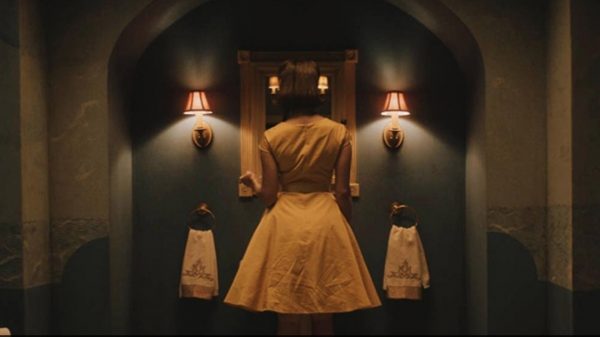
Kelly McNeely: I love that little eldritch horror monster vibe to it. And as far as the film itself goes, the visual aesthetic is absolutely stunning. I want to live in that house so badly. I don’t know where you found it, but I want to live in that house. How did you create the visual language for the film, with that retro kind of vintage vibe? And how did you just so on such a small budget?
Ryan Spindell: I’m just a huge fan of classic horror cinema, and the keystone of almost everything I’ve done has been the original Twilight Zone series. So just like, as far as stylistically, I love that like 40s-through-60s time period, because in my mind — and I don’t think this is consistent for everybody — but in my mind that represents a timeless period, because it was an era before synthetic materials were used. The 60s kind of gave rise to plastics and metals and stuff changing dramatically, but prior to that, furniture and clothing, everything was pretty standard and kind of stood the test of time.
Kelly McNeely: You had it for life.
Ryan Spindell: Yeah, exactly. In the 1950s, you might have a hutch that was like, 100 years old. And so going into this and thinking about the kind of movie it was, and how it was a movie about storytellers, telling stories. And I was thinking a lot about campfire stories and how campfire stories, they kind of stand the test of time, because they’re never really set in any specific time or place. They just kind of are. And so it allowed me to combine the two things, this idea of stories being filtered through this sort of old man’s lens, as well as my weird quirks for loving old-timey things. And to kind of create something that hopefully was just more visually interesting.
Growing up, I was very much an art kid. I always wanted to be a cartoonist, and I would build things with my hands and paint, and I was very tactile, and I love that sort of thing. And I kind of avoided horror for a long time, because I thought that horror movies were teenagers getting hacked up in the woods by someone wearing a pig mask. But wasn’t until I saw Sam Raimi’s early stuff, and Peter Jackson’s early stuff. And in particular, Jean Pierre Jaunet’s early stuff. I really started to fall in love with this more robust world building auteur filmmakers and the kind of craft that was involved there. So I remember watching Delicatessen and City of Lost Children and Amelie and just thinking like, man, I’d love to see this guy do a horror movie. And so I think a lot of that has become a part of my aesthetic. And it’s funny because I watch everything, I like straight horror, I like supernatural horror, I like it all. But I think my “in” as a creative, and I think the voice that I would like to try to amplify kind of lives in this sort of more rich, fantastical world.
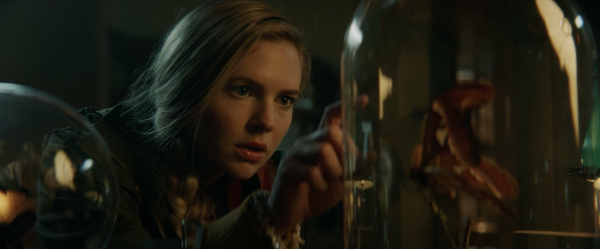
Kelly McNeely: I definitely see that — the influence visually — it’s the color and it’s just a gorgeous, gorgeous film. So that kind of feeds into my next question really nicely. What were your inspirations or influences when making the film. And also, to tag onto that, you clearly have a lot of love for the anthology format. Is there any particular segment of any anthology that you’ve seen that really stuck out to you, or that you have as a personal favorite?
Ryan Spindell: Oh, yeah, absolutely. The second question, yes. I was a huge fan of anthologies before I even wanted to make movies. But then getting into this one, I really started doing a lot of research, because I think there are a lot of things about anthologies that kind of irk me that I could kind of see consistently. So it became studying everything I could to find out, what are the things that I love about anthologies, and what are the things I’m not so keen on? And how can we try to do something interesting with the format that you haven’t quite seen before. And so through that process, I’d seen it all. I mean, the one that really was always super close to my heart is The Raft from Creepshow 2.
Kelly McNeely: Yes!
Ryan Spindell: Yes! I lived on a lake. We had a float — me and my siblings — had many times gotten stuck on that float because we scared ourselves out of jumping in the water till the sun went down. So that was a very visceral one for me that I think holds up. It’s a banger, to this day. I love in Tales From the Darkside, I think it’s called Lover’s Kiss? I’m trying to remember what it’s called, but it’s the one where the guy sees like a gargoyle murder someone and he promises the gargoyle that — Do you know this one?
Kelly McNeely: It sounds familiar…
Ryan Spindell: He’s basically an artist living in the 90s in New York, which has a very specific vibe to it in cinema. And he sees this gargoyle monster kill a person. And the gargoyle says, I’ll make your dreams come true, just never tell anybody what you saw. And so he leaves and he meets a beautiful woman, and he’s like, you’ve got to get out of here. There’s a monster on the loose, and he falls in love with the beautiful woman. And his career as an artist explodes, and he gets married and has kids. And it’s like, I don’t know, 10 or 12 years later or something. And then one day he and his wife are talking and she’s like, you don’t have any secrets from me, do you? And he’s like, well, I do have to tell you about this one thing I saw. And then — spoiler alert — when he tells her, she’s like, you promised you’d never tell! Her skin splits off and she is the gargoyle, but then these kids come in and then the kids’ skins split off and they’re gargoyles, and it was so affecting to me as a kid. I love that one.
Kelly McNeely: It’s like — is it Kwaidan? I think — the Japanese one from the 1960s, that has a story that’s really similar to that as well.
Ryan Spindell: Yes! Yes. I love, like, Body Bags I think is a great one that has some really interesting stories. And John Carpenter’s always great. That one’s full of amazing actors across the board. And then I’m really into the Amicus films from the 70s, the very British, stuffy, very serious horror anthology movies that were usually directed by one person, and more part of one singular whole as opposed to an aggregate that you see nowadays.
And one of the things that was really cool about this movie — and I think this is probably somewhat universal for first time filmmakers — is that when you’re making your first movie, you kind of feel like you might never get to do it again. So you want to throw everything into it. It’s just like a kitchen sink movie. But one advantage I had with making an anthology movie was that I had all of these different sub genres and different types of stories that really — quite literally — allowed me to throw everything that I love about genre into the movie.
So there’s stuff that’s like, again, Jean Pierre Jeunet, huge influence, Sam Raimi, Peter Jackson, huge, huge. There’s definitely some Phantasm in there, which I think a lot of people have drawn parallels with Clancy [Brown]’s character as Angus Scrimm. Poltergeist, Steven Spielberg, huge, huge influence. I mean, I definitely am a kid of the late 80s, early 90s. And I definitely love that fantastic world building that Amblin really had the market on in that time. I miss that type of movie so badly. It doesn’t pander; it’s fun, it’s scary, it’s funny, it’s a little bit of everything. I guess commercial would be the word to describe it, although I think that that’s sort of limiting in the artistry.
Kelly McNeely: It just feels sort of adventurous.
Ryan Spindell: Adventurous! Yeah, and I found what’s interesting is — and this is something I was just thinking about the other day — because as a horror fan, and it’s Halloween, and I want to watch horror movies, and I’ve been watching a lot of horror movies. And when I’m on the streaming services, I’m looking for new stuff. One of the things I haven’t been finding a lot of is fun horror. There is some fun horror out there, and I’ve watched everything I can, but just the other day, I was like, I want like a fun, not super serious, not depressing, intense, dread inducing experience, but just a very, like, Halloween vibe. And I couldn’t find anything. And I thought that was such a bummer, because… I don’t know, I think that maybe the studios have this idea that horror works best in October, and that’s 100% true. But I also think there’s a certain type of horror that particularly works well this time of year that might be sort of missing from the overall market.
Kelly McNeely: It’s more accessible, I think.
Ryan Spindell: Yeah, yeah, that’s right. That’s true. Like, October is a good time of month where people who don’t usually like horror will get into it. Like, you know what, I will watch horror now.
Kelly McNeely: It’s spooky month.
Ryan Spindell: Yeah, exactly.
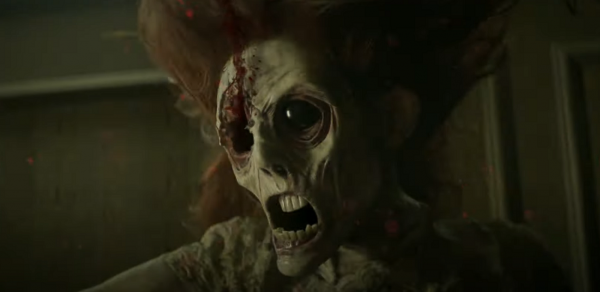
Kelly McNeely: So there’s a lot of spectacle achieved on a small budget with this film. Are there any lessons that you learned when making The Mortuary Collection that you would either carry forward into your next film or give as advice to an aspiring filmmaker?
Ryan Spindell: I think the biggest challenge that was this film was, I think, when you’re making your first feature, you want to probably focus on one story and one set of characters, not five stories, five sets of characters. I felt like the challenge was worth it for this one, just because I loved the format so much and I desperately wanted this format to come back, and I was like, can I use this as some sort of springboard, or just even a slight nudge to kind of get this back into the popular conscious. But it wasn’t until I was in the middle of it, and we were cross shooting — so the first half of the day would be from one story, and the second half of it from another story — and my job as a director is to keep track of how the stories are evolving, how the characters are evolving.
If an actor and I start to change something in one of the scenes, I have to keep that in mind as we progress, but I might not shoot that next scene for a couple of days, and in between them shooting, you know, two other segments. And so that sort of crazy Jenga in my head was overwhelming at times. And I really had to sort of trust that my planning was accurate, because I had no idea if it was actually going to piece together at the end. And so that was a big takeaway. So I would never want to discourage anybody from making an anthology movie, because I think we need more of them. But I would definitely say that it’s definitely the extreme sport of filmmaking, which I think is already an extreme sport, to try to do it all at once, at least.
Kelly McNeely: Always plan ahead, I guess.
Ryan Spindell: Yeah. That’s the thing, I’ve watched some of these filmmakers — and I think Spielberg does this now as well — where they just kind of show up on set, and they run it with the actors, they’re like, okay, put the camera over here, we’ll dolly it, and they kind of figure it out in the moment. But with this movie, because we had such a small budget, and we had such an insanely ambitious schedule, that there was no room for coverage. There was no room for mistakes, like every shot kind of pieced together the next shot, and if something didn’t work, if it wasn’t planned properly and that piece didn’t happen, then we didn’t have that piece of the scene. And so it really did feel like walking a tightrope without a net throughout the whole course of making it. Which could wear you down. And of course, because it’s multiple stories, the schedule was sort of like we’d shoot some stuff together, and then we go away for a few months, then we shoot another piece, we kind of staggered the way it was shot. It ended up being like a two year process of just trying to keep all of these little tiny threads in my brain.
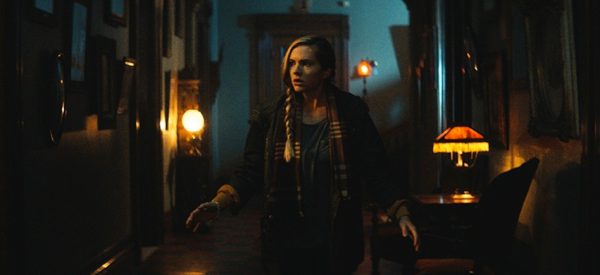
Kelly McNeely: So, last question for you. Because again, it’s Halloween month, it’s October, do you have a favorite Halloween movie, or horror movies that you watch around Halloween? Do you have a go-to that’s your Halloween movie?
Ryan Spindell: I do. I have a bunch of them, but one that I would recommend because I think a lot of people don’t have it on their list is Peter Jackson’s The Frighteners. Perfect for this spooky season, it’s just such a wonderful movie. I feel like it’s the pinnacle of him as a horror filmmaker, with all the bells and whistles before he started making the Lord of the Rings movies. But I mean, then on top of that, I gotta say Poltergeist. Huge one. Creepshow is one that I watch again and again. And then I think if I’m really looking to get scared, it’s the remake of The Ring, which I know is sort of a hot take. Some people find it to be awful, and some people absolutely love it. It hit me at the right time, it’s definitely one of the scariest movies I’ve ever seen.
Kelly McNeely: I remember going and seeing that movie in theaters when I was young. And I remember sitting pretty close to the front and just thinking like, oh, I don’t think I’m ready for this right now. I don’t think I’m mentally prepared for this. Because it got very scary very quickly.
Ryan Spindell: It does. It’s the closet scare, the scare in the closet. I think it does two things; so I had a very similar experience, I think I was like a freshman in college. I was sitting right at the front because I was like, late to the theater or something. And I genuinely remember gripping the armrest of my chair, and being aware that I’d never gripped the armrest of my chair in a movie before. But I think what that movie does that’s really amazing, is that the conceit is really dumb. It seems really dumb, right? Like, if you’re just hearing about it, it’s about a videotape that kills you. And then the movie opens with these high school girls and they’re just hanging out, like, hey, have you heard about this videotape that kills you? And so you’re kind of like, I don’t know, in my mind, I was like, this is gonna be a dumb movie. And then when it turns, it just caught me off guard. I let my guard completely down, ready for another like, throw away horror thing, and then when it cuts to that girl in the closet. I’m like, oh, man, please don’t do that to me anymore!
You can read my full review of The Mortuary Collection here, and you can check out the film for yourself on Shudder!
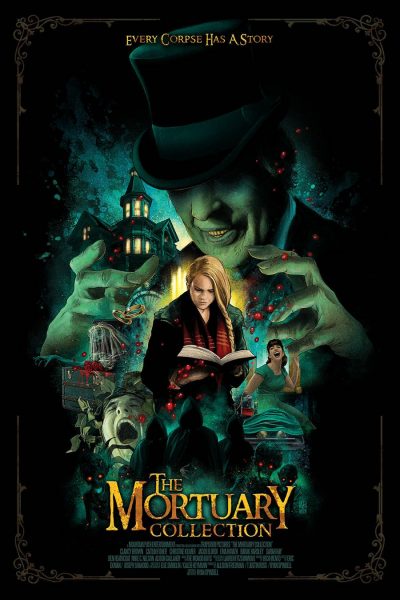
Listen to the 'Eye On Horror Podcast'

News
Brad Dourif Says He’s Retiring Except For One Important Role
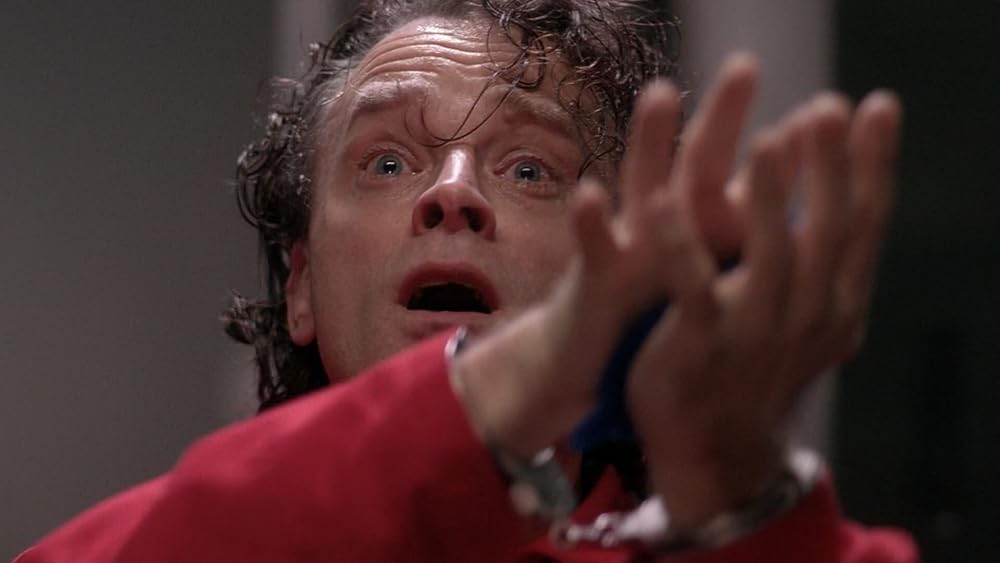
Brad Dourif has been doing movies for nearly 50 years. Now it seems he is walking away from the industry at 74 to enjoy his golden years. Except, there is a caveat.
Recently, digital entertainment publication JoBlo’s Tyler Nichols talked to some of the Chucky television series cast members. During the interview, Dourif made an announcement.
“Dourif said that he’s retired from acting,” says Nichols. “The only reason he came back for the show was because of his daughter Fiona and he considers Chucky creator Don Mancini to be family. But for non-Chucky stuff, he considers himself retired.”
Dourif has voiced the possessed doll since 1988 (minus the 2019 reboot). The original movie “Child’s Play” has become such a cult classic it’s at the top of some people’s best chillers of all time. Chucky himself is ingrained in pop culture history much like Frankenstein or Jason Voorhees.
While Dourif may be known for his famous voiceover, he is also an Oscar-nominated actor for his part in One Flew Over the Cuckoo’s Nest. Another famous horror role is The Gemini Killer in William Peter Blatty’s Exorcist III. And who can forget Betazoid Lon Suder in Star Trek: Voyager?
The good news is that Don Mancini is already pitching a concept for season four of Chucky which might also include a feature-length movie with a series tie-in. So, Although Dourif says he is retiring from the industry, ironically he is Chucky’s friend till the end.
Listen to the 'Eye On Horror Podcast'
Editorial
7 Great ‘Scream’ Fan Films & Shorts Worth a Watch
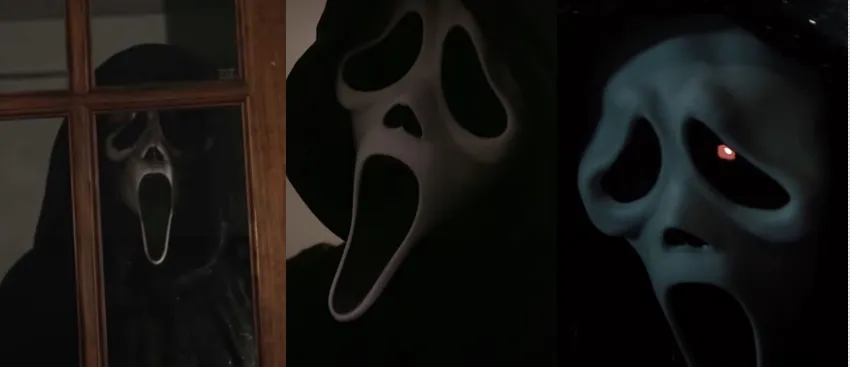
The Scream franchise is such an iconic series, that many budding filmmakers take inspiration from it and make their own sequels or, at least, build upon the original universe created by screenwriter Kevin Williamson. YouTube is the perfect medium to showcase these talents (and budgets) with fan-made homages with their own personal twists.
The great thing about Ghostface is that he can appear anywhere, in any town, he just needs the signature mask, knife, and unhinged motive. Thanks to Fair Use laws it’s possible to expand upon Wes Craven’s creation by simply getting a group of young adults together and killing them off one by one. Oh, and don’t forget the twist. You’ll notice that Roger Jackson’s famous Ghostface voice is uncanny valley, but you get the gist.
We have gathered five fan films/shorts related to Scream that we thought were pretty good. Although they can’t possibly match the beats of a $33 million blockbuster, they get by on what they have. But who needs money? If you’re talented and motivated anything is possible as proven by these filmmakers who are well on their way to the big leagues.
Take a look at the below films and let us know what you think. And while you’re at it, leave these young filmmakers a thumbs up, or leave them a comment to encourage them to create more films. Besides, where else are you going to see Ghostface vs. a Katana all set to a hip-hop soundtrack?
Scream Live (2023)
Ghostface (2021)
Ghost Face (2023)
Don’t Scream (2022)
Scream: A Fan Film (2023)
The Scream (2023)
A Scream Fan Film (2023)
Listen to the 'Eye On Horror Podcast'
Movies
Another Creepy Spider Movie Hits Shudder This Month
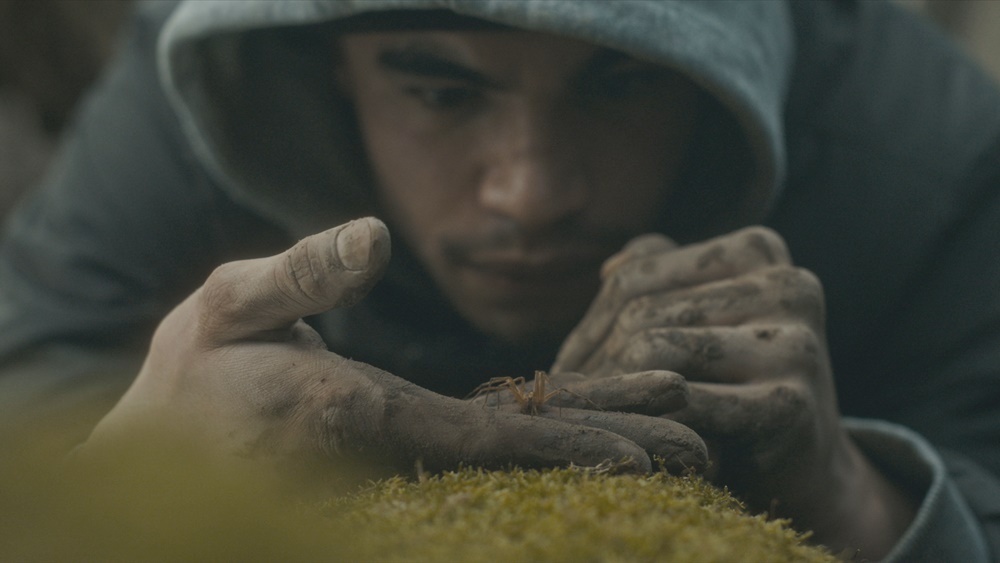
Good spider films are a theme this year. First, we had Sting and then there was Infested. The former is still in theaters and the latter is coming to Shudder starting April 26.
Infested has been getting some good reviews. People are saying that it’s not only a great creature feature but also a social commentary on racism in France.
According to IMDb: Writer/director Sébastien Vanicek was looking for ideas around the discrimination faced by black and Arab-looking people in France, and that led him to spiders, which are rarely welcome in homes; whenever they’re spotted, they’re swatted. As everyone in the story (people and spiders) is treated like vermin by society, the title came to him naturally.
Shudder has become the gold standard for streaming horror content. Since 2016, the service has been offering fans an expansive library of genre movies. in 2017, they began to stream exclusive content.
Since then Shudder has become a powerhouse in the film festival circuit, buying distribution rights to movies, or just producing some of their own. Just like Netflix, they give a film a short theatrical run before adding it to their library exclusively for subscribers.
Late Night With the Devil is a great example. It was released theatrically on March 22 and will begin streaming on the platform starting April 19.
While not getting the same buzz as Late Night, Infested is a festival favorite and many have said if you suffer from arachnophobia, you might want to take heed before watching it.
According to the synopsis, our main character, Kalib is turning 30 and dealing with some family issues. “He’s fighting with his sister over an inheritance and has cut ties with his best friend. Fascinated by exotic animals, he finds a venomous spider in a shop and brings it back to his apartment. It only takes a moment for the spider to escape and reproduce, turning the whole building into a dreadful web trap. The only option for Kaleb and his friends is to find a way out and survive.”
The film will be available to watch on Shudder starting April 26.
Listen to the 'Eye On Horror Podcast'
-
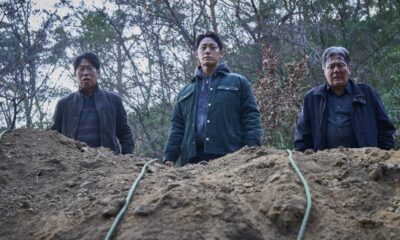
 News4 days ago
News4 days agoThis Horror Film Just Derailed a Record Held by ‘Train to Busan’
-
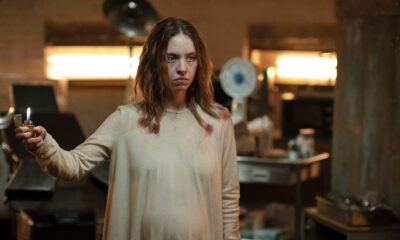
 Movies4 days ago
Movies4 days agoWatch ‘Immaculate’ At Home Right Now
-

 News3 days ago
News3 days agoHome Depot’s 12-Foot Skeleton Returns with a New Friend, Plus New Life-Size Prop from Spirit Halloween
-

 News2 days ago
News2 days agoWoman Brings Corpse Into Bank To Sign Loan Papers
-

 News5 days ago
News5 days agoRead Reviews For ‘Abigail’ The Latest From Radio Silence
-

 News5 days ago
News5 days agoMelissa Barrera Says Her ‘Scream’ Contract Never Included a Third Movie
-
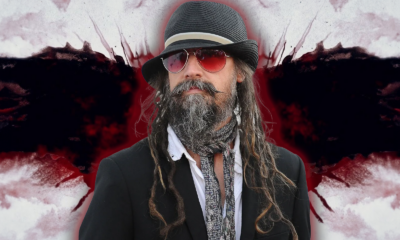
 Editorial6 days ago
Editorial6 days agoRob Zombie’s Directorial Debut Was Almost ‘The Crow 3’
-
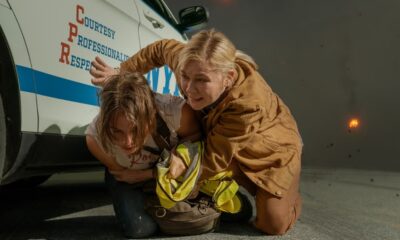
 News4 days ago
News4 days agoA24 Joins Blockbuster Movie Club With Their Biggest Opening Ever


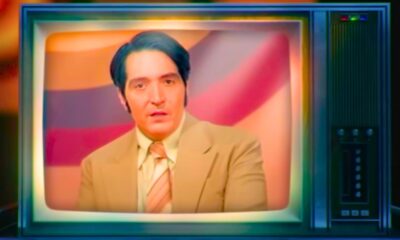

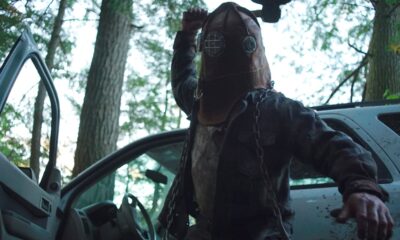






















You must be logged in to post a comment Login